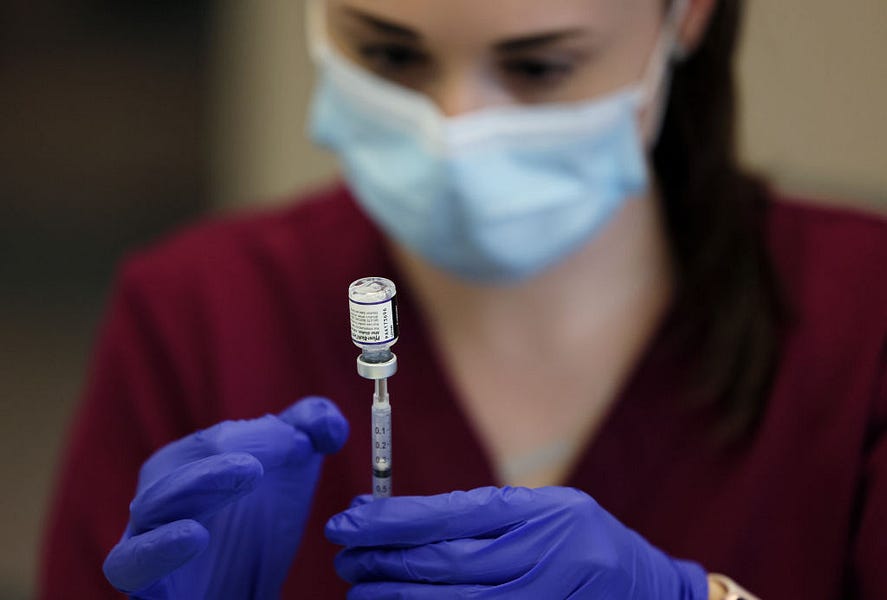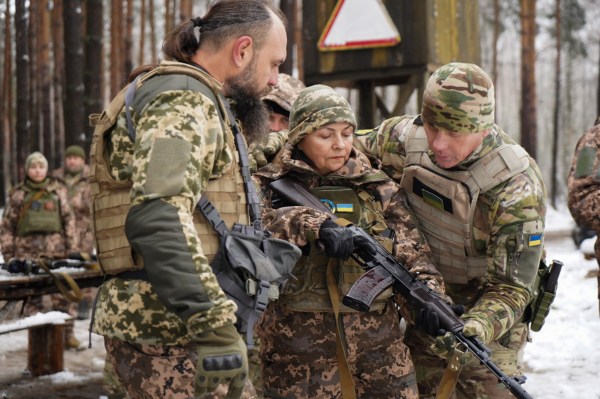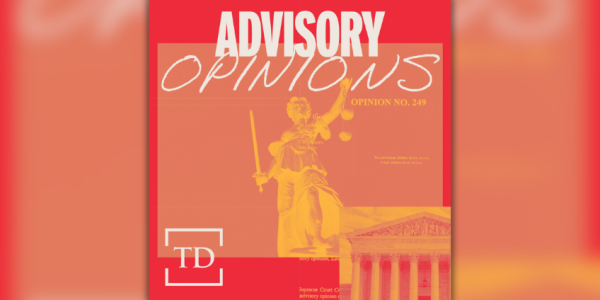Happy Wednesday! If any U.S. Senate candidates would like to be interviewed by a reporter, attempt to hang up the phone on said reporter, unknowingly fail to hang up the phone on said reporter, and proceed to have an angry conversation with their spouse about said reporter while said reporter continues listening in, please let us know.
Quick Hits: Today’s Top Stories
-
Citing a “wide prediction interval,” the Centers for Disease Control on Tuesday dramatically revised its estimates of Omicron prevalence in the United States for the week ending December 18, from 73 percent down to 23 percent. The agency still believes Omicron is outcompeting other COVID-19 variants, and pegged its prevalence during the week ending December 25 at about 59 percent, with a 95 percent confidence interval between 42 percent and 74 percent.
-
The Food and Drug Administration said Tuesday that preliminary National Institutes of Health data suggest antigen COVID-19 tests are able to detect Omicron, but may have reduced sensitivity—meaning they could miss more actual Omicron infections than they did with previous variants. The regulatory agency encouraged those who test negative with an antigen test but have symptoms to seek out a molecular test.
-
The Biden administration said Tuesday that U.S. officials will hold a “Strategic Stability Dialogue” with their Russian counterparts on January 10 in the hopes of staving off a Russian invasion of Ukraine and achieving a diplomatic solution to mounting tensions. The administration did not disclose who will be leading the United States’ delegation, or where the meeting will take place.
-
Mayor Bill de Blasio and Mayor-elect Eric Adams announced yesterday that New York City schools will double their testing program and continue with in-person learning after winter break as planned, despite the rapid spread of the Omicron variant. “Schools are among the safest places to be throughout the COVID-19 pandemic and we’re working closely with the incoming administration to keep it that way,” de Blasio said.
-
U.S. home price growth slowed in October for the third consecutive month, with the S&P CoreLogic Case-Shiller National Home Price Index finding home prices up 19.1 percent year-over-year, down from 19.7 percent in September.
-
Barring a last minute finding, new oil and gas discoveries fell to their lowest level since 1946 in 2021, according to research from Rystad Energy. Global energy companies unearthed just 4.7 billion barrels of oil equivalent (boe) this year, down sharply from 2020’s 12.5 billion.
-
Former Senator Harry Reid—who led the Democratic caucus from 2005 to 2017 and served as majority leader from 2007 to 2015—died on Tuesday at the age of 82. NFL Hall of Fame coach and broadcaster John Madden also died yesterday at the age of 85.
-
A gunman in Colorado killed five people and injured two others on Monday night before being shot and killed by police. Denver police said Tuesday the 47-year-old man knew most of his targets and had previously been investigated.
Hospitals Face Staffing Shortages Amidst Omicron Surge

We’ve learned a lot about the Omicron variant in the five or so weeks since it was first sequenced and disclosed in South Africa—and much of it has been positive. The new strain is better at evading vaccine and natural immunity’s first line of defense, but longer-term T-cell immunity still protects against severe disease. It’s crazy transmissible, but evidence that it causes milder symptoms continues to accumulate. This week, immunologist and Oxford University Regius Professor of Medicine John Bell went so far as to say Omicron is “not the same disease we were seeing a year ago,” but a new study out of South Africa yesterday suggests that those who recover from the new, milder variant also generate some neutralizing antibodies against the more virulent Delta strain as well.
Taken together, the scenario that infectious disease specialist Dr. Monica Gandhi outlined to The Dispatch last month—that, like the Spanish flu a century ago, Omicron could more or less bring the pandemic to an end by ripping through the population, causing mild illness, and burning itself out—is becoming more and more plausible. But to get to that point, we first need to get through the next few weeks—the “ripping through the population” part.
It’s certainly happening. At 266,563, the United States’ seven-day rolling average for new confirmed COVID-19 cases hit a record high on Tuesday, and it will likely do so again today, tomorrow, the next day, and so on. A recent projection from the University of Texas at Austin’s COVID-19 Modeling Consortium foresaw a worst-case scenario of 800,000 cases per day; Dr. Francis Collins—the retiring director of the National Institutes of Health—told NPR last week he wouldn’t be surprised to see that number approach 1 million. (It’s worth noting that these data do not account for at-home tests, meaning the number of positive cases is likely much higher than the official figures suggest.)
On a strictly individual basis, those estimates shouldn’t be too much cause for concern. Although pinning down its exact prevalence is proving difficult, Omicron is either already the dominant COVID-19 strain in the country or about to be, and the vast, vast majority of those infected—particularly those having received two or three vaccine doses—will experience mild symptoms, or no symptoms at all.
But in the aggregate, this winter’s surge still has the potential to wreak havoc nationwide—even though the population’s levels of immunity are far higher than last winter and Omicron seems to cause milder disease. “If a small percentage of people who are infected need to be in hospitals or need ICU care,” Dr. Isaac Bogoch—a clinical epidemiologist and infectious disease expert at the University of Toronto—told The Dispatch last week, “a small percentage of a massive number of people ends up being a lot of people still.”
That burden is going to fall squarely on an American healthcare sector that, according to the Bureau of Labor Statistics, is employing about 450,000 fewer workers than it was at the beginning of the pandemic. A three-percent contraction may not sound like much in the context of total U.S. employment falling about 2.6 percent over the same time period, but the churn within the field has been staggering. An October Morning Consult survey found just under one in five healthcare workers had quit their job since February 2020, and among those who hadn’t quit, 31 percent reported thinking about it. A whopping 66 percent of acute and critical care nurses said the pandemic had caused them to consider leaving nursing entirely, according to an American Association of Critical-Care Nurses poll from September.
The reasons for this churn are complex. The pandemic has led many Americans to reevaluate many aspects of their lives—including work—and rising wages may have attracted some of healthcare’s lower-paid employees to greener pastures. But above it all, working in medicine these past two years has been really, really hard, as The Atlantic’s Ed Yong described in heartbreaking detail last month.
In the spring of 2020, “I’d walk past an ice truck of dead bodies, and pictures on the wall of cleaning staff and nurses who’d died, into a room with more dead bodies,” Lindsay Fox, a former emergency-medicine doctor from Newark, New Jersey, told me. At the same time, Artec Durham, an ICU nurse from Flagstaff, Arizona, was watching his hospital fill with patients from the Navajo Nation. “Nearly every one of them died, and there was nothing we could do,” he said. “We ran out of body bags.”
…
Health-care workers want to help their patients, and their inability to do so properly is hollowing them out. “Especially now, with Delta, not many people get better and go home,” [nurse Cassandra] Werry told me. People have asked her if she would have gone to nursing school had she known the circumstances she would encounter, and for her, “it’s a resounding no,” she said. (Werry quit her job in an Arizona hospital last December and plans on leaving medicine once she pays off her student debts.)
…
Health-care workers aren’t quitting because they can’t handle their jobs. They’re quitting because they can’t handle being unable to do their jobs. Even before COVID-19, many of them struggled to bridge the gap between the noble ideals of their profession and the realities of its business. The pandemic simply pushed them past the limits of that compromise.
Thankfully, COVID-19 hospitalizations nationwide are not rising anywhere near as quickly as cases are, with the former up just six percent over the past two weeks compared to 126 percent for the latter. But severe illness lags behind initial infection, of course, and the hospitalization number will continue to increase as cases do, even if the two figures are less tethered together than last winter. (In the last full week of November, data from more than 250 hospitals in 14 states showed fully vaccinated people were more than 17 times less likely to be hospitalized with COVID-19 than unvaccinated people.)
To prepare for this likely surge, the Biden administration last week announced it was mobilizing an additional 1,000 military medical personnel for deployment, pre-positioning personal protective equipment and ventilators from the Strategic National Stockpile for quicker disbursement around the country, and dispatching FEMA dollars and response teams nationwide to help expand hospital capacity.
Some states—Pennsylvania, Ohio, Michigan, Indiana, Arizona—are starting to bump up against 80 percent hospital bed usage, according to Department of Health and Human Services data, and Texas’ Department of State Health Services said yesterday regional infusion centers in several cities had depleted their stockpiles of sotrovimab—the monoclonal antibody most effective at treating Omicron patients—and won’t be able to offer it to patients until the federal government ships more next month. But the bigger concern thus far during the Omicron wave seems to be a shortage of nurses and doctors to treat COVID-19 patients.
“We were seeing sick patients, now we’re seeing sick staff,” Karen Lowe—a registered nurse in northern Virginia—told The Dispatch. “This Omicron variant is so contagious that it’s spreading staff-to-staff. So now it’s affecting our ability to take care of patients, because staff is out.”
Dr. Cecil Huang—an anesthesiologist in the mid-Atlantic—said two of his colleagues have contracted the virus over the past week. That’d be a problem anytime—but it was even more so over Christmas, and caused a series of ripple effects. “[Even] normally people don’t want to step up during the holidays—you can wave more money at them and it’s not going to do anything,” he told The Dispatch. “If anesthesia is short-staffed, then all these surgeries get canceled. And that’s becoming a huge problem in our hospital.”
What Huang described is exactly the kind of situation the Centers for Disease Control hopes to mitigate across a variety of industries with its updated quarantine guidance cutting the recommended isolation time after a positive COVID-19 test in half, from 10 days to five—if asymptomatic.
“The change is motivated by science demonstrating that the majority of SARS-CoV-2 transmission occurs early in the course of illness, generally in the 1-2 days prior to onset of symptoms and the 2-3 days after,” the CDC said. “Therefore, people who test positive should isolate for 5 days and, if asymptomatic at that time, they may leave isolation if they can continue to mask for 5 days to minimize the risk of infecting others.”
But five days is still plenty long enough to place additional strain on an already strained system, and—combined with an increasing number of COVID-19 patients—the Omicron wave is leading hospitals in Massachusetts, Michigan, Ohio, and elsewhere once again to pause elective procedures and effectively triage emergency patients in waiting rooms. NBC News reported last week on Sandy Cohen, an 83-year-old woman in Washington, D.C. who waited eight hours for antibiotic eyedrops to deal with a corneal infection that had swollen her eye shut—and went blind three weeks later.
“Here’s this woman who desperately needs care, but everybody around you desperately needs care,” Cohen’s daughter, Sherry, said.
Dr. Akino Yamashita—a hospitalist treating COVID-19 patients in Queens, New York who has written about the pandemic for The Dispatch—explains that patients hospitalized with the virus require an inordinate amount of care. “If people were sick enough to be in the hospital and they had COVID, we could say, ‘Okay this is serious. We need to treat this seriously,’” she told The Dispatch. “We need to give particular treatments. And you follow them closely—they could crash at any moment, they could die or go to the ICU.”
Yamashita’s hospital tests all admitted patients for COVID-19, whether it’s the reason they’re there or not. Amid the Omicron wave, that has resulted in an increasing number of people admitted “with COVID” rather than “for COVID.” Coupled with all the indications that Omicron results in fewer hospitalizations—and shorter stays for those who do make it to the hospital—Yamashita wondered if treatment protocols will begin to shift.
“We have all these COVID patients,” she said. “Some of them may still need to be treated with the same mindset of ‘they could crash at any time, they could die at any time.’ But maybe not all these patients need to be treated that way.”
Worth Your Time
-
Charlie Warzel’s latest essay asks whether the nastiness and vitriol so prevalent on social media can be attributed to new technologies, or if it’s simply a reflection of an increasingly unhappy populace. “Online garbage (whether political and scientific misinformation or racist memes) is also created because there’s an audience for it,” he writes. “The internet, after all, is populated by people—billions of them. Their thoughts and impulses and diatribes are grist for the algorithmic content mills. When we talk about engagement, we are talking about them. They—or rather, we—are the ones clicking. We are often the ones telling the platforms, ‘More of this, please.’ … Misery, famously, loves company—and, however shallow, social media provides that in droves. It’s worth asking: What if the internet so frequently feels miserable, and makes those of us posting and reacting feel miserable, because so many people are miserable in the first place? What if we all absorb that misery at scale online and, sometimes unwittingly, inflict it on one another?”
-
In a piece for Reason, Aaron Ross Powell argues it’s unreasonable to expect good governance because our politics are bad. “The political environment discourages ethics, benevolence, compassion, sympathy, wisdom, mindfulness, and equanimity,” he writes. “If the environment were small and we didn’t have to spend much time in it, we perhaps could overlook these problems, much as one might think that middle school is a terrible place but it’s only a few years and then you move on. But the political arena isn’t small at all. The same viciousness and misuse that make politics so bad also makes politics grow. Unskillful use pulls more and more of our lives and choices into a centralized political sphere, and as that sphere grows more powerful, that gives us yet more reasons to spend our time in it. I don’t much like ice hockey, but I can ignore it because it has no impact on me. I don’t much like politics, but I can’t ignore it, because its reach is increasingly inescapable.”
Presented Without Comment
Toeing the Company Line
-
For this week’s Uphill, Haley chatted with Democratic Rep. Dan Kildee of Michigan about his experience on January 6, and how his approach to Congress has evolved in the year since. “The country is trying to have a conversation about the movie they just saw,” he said. “And they’re standing in the lobby of the movie theater talking about the movie, and they can’t understand one another, but they don’t know that it was a multiplex. They saw two different movies.”
Let Us Know
Are you a healthcare worker, or do you have healthcare workers in your life? How are you, or they, holding up as we wrap up our second year of the pandemic?
Reporting by Declan Garvey (@declanpgarvey), Andrew Egger (@EggerDC), Charlotte Lawson (@lawsonreports), Audrey Fahlberg (@AudreyFahlberg), Ryan Brown (@RyanP_Brown), Harvest Prude (@HarvestPrude), and Steve Hayes (@stephenfhayes).







Please note that we at The Dispatch hold ourselves, our work, and our commenters to a higher standard than other places on the internet. We welcome comments that foster genuine debate or discussion—including comments critical of us or our work—but responses that include ad hominem attacks on fellow Dispatch members or are intended to stoke fear and anger may be moderated.
You are currently using a limited time guest pass and do not have access to commenting. Consider subscribing to join the conversation.
With your membership, you only have the ability to comment on The Morning Dispatch articles. Consider upgrading to join the conversation everywhere.